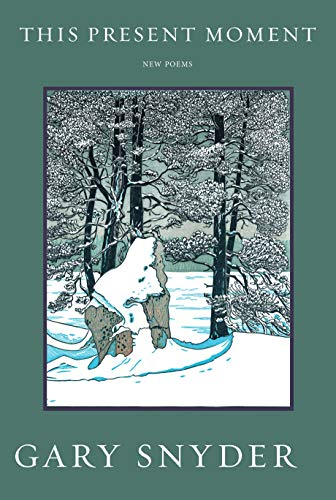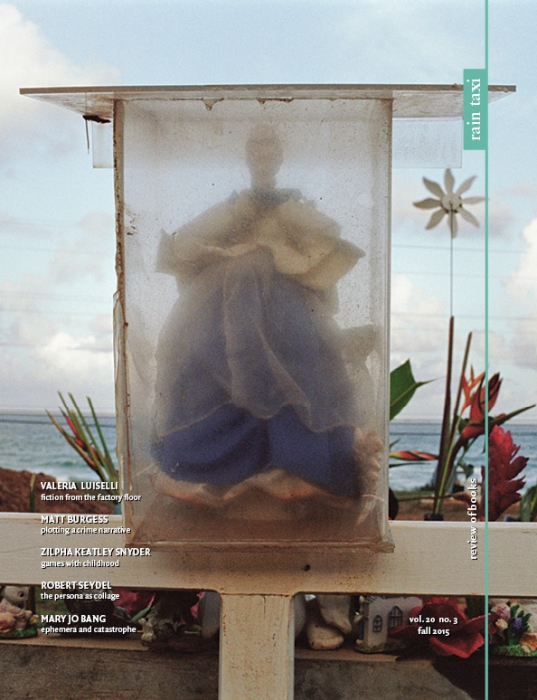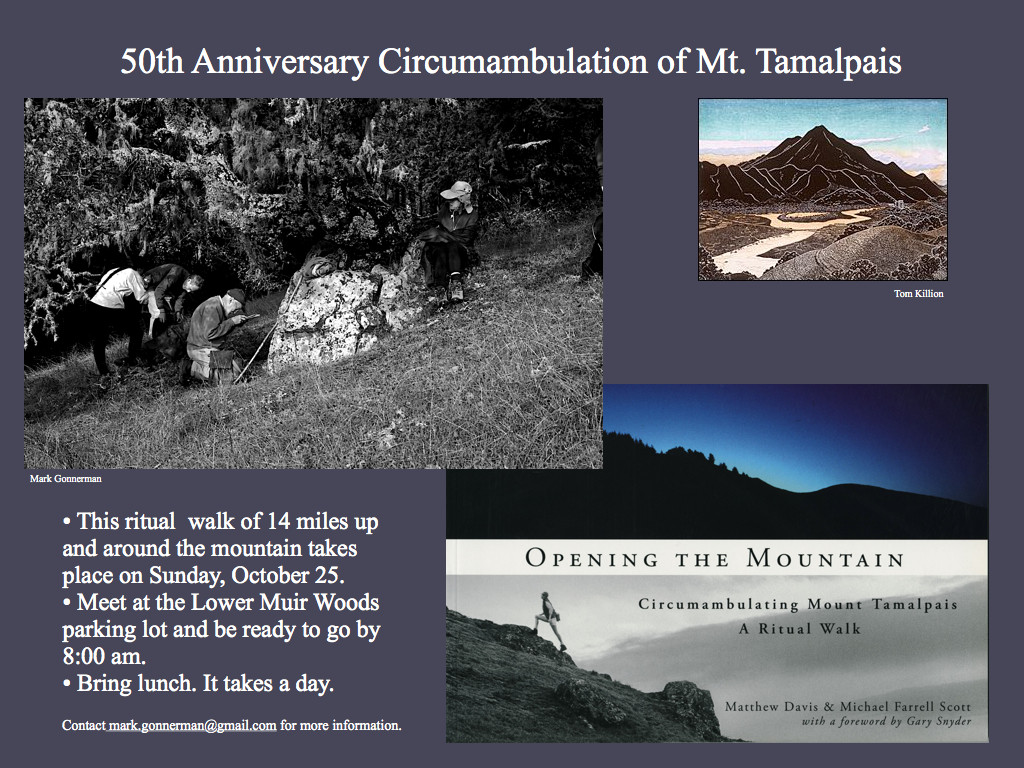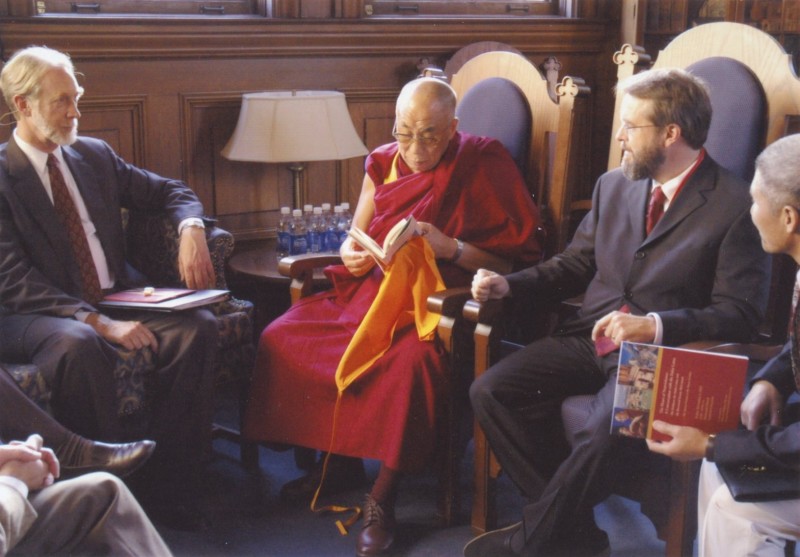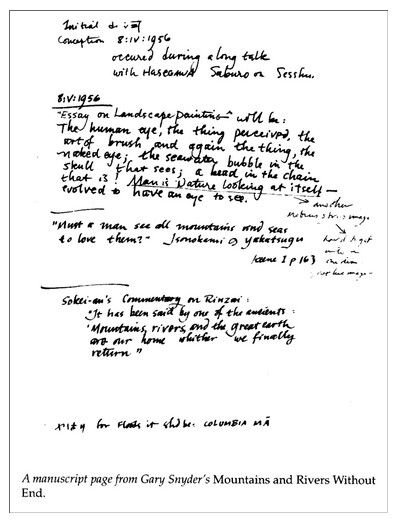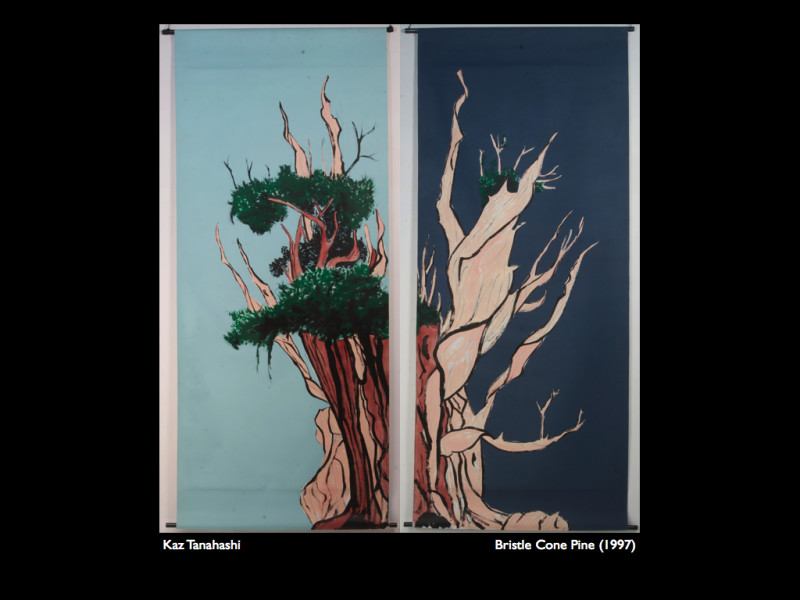Read Mark Gonnerman’s review essay on Gary Snyder’s This Present Moment:
Alan Williamson Reviews A Sense of the Whole (Winter 2015)
Alan Williamson calls A Sense of the Whole “an extraordinary book” in his review essay in Western American Literature. See:
Alan Williamson, “A Language for Vast Space,” Western American Literature 50/4 (Winter 2015), 375–79.
Available via this link:
A Sense of the Whole reviewed by Justin Wadland in Rain Taxi 20/3 (Fall 2015)
Justin Wadland reviews A Sense of the Whole in Rain Taxi 20/3 (2015): 8–9.
“Tucked in an appendix at the end of volume, another essay by Gonnerman titled “Fieldwork: Gary Snyder, Libraries, and Book Learning” offers a fascinating survey of the important place textual study has had in the poet’s life: ‘Contrary to what may be a popular misunderstanding of Zen Buddhist life, Snyder enjoys extraordinary book knowledge and knows how to use it.'”
Rain Taxi (Fall 2015 Table of Contents)
“Snyder envisioned the poem as a song of healing, and these essays make clear that this healing happens through a deeper awareness of the interdependence of all beings.”
—Justin Wadland
50th Anniversary CircumTam Announced | October 25, 2015
From Nicholas Triolo:
Hi there,
- When: Sunday, October 25th, 2015. 8am-8pm
- Where: Overflow parking lot at Muir Woods, by Redwood Creek.
- Who: Everyone is welcome. I’ve only sent this list to the core group, but please share.
- 8:00a – 8:15a – Arrival and preparation
- 8:15a – 8:30a – Welcome introduction
- 8:30a – 7:00p – Walk (sunset is 6:19pm, though this could take longer; we will walk in silence except for lunch and the descent)
- 7:15p – 7:30p – Closing talk
- 7:30p – 9:30p – Dinner somewhere close by
You are all experienced CircumTam walkers, so you know what to expect!
- Lunch and snacks
- Something warm
- Headlamp
- Any personal items, prayer beads, etc.
nicktriolo@gmail.com
(909) 809-1523
Skype: nickytree
Website: The Jasmine Dialogues
Facebook: facebook.com/nick.triolo
Twitter: twitter.com/nicktriolo
Gary Snyder and the XIVth Dalai Lama
Today is the Dalai Lama’s 80th rebirthday. When I hosted His Holiness at the Aurora Forum at Stanford on November 3–4, 2005, I presented him with a copy of Mountains and Rivers Without End. I reminded him that the poet, Gary Snyder, and his traveling companions, Joanne Kyger, Allen Ginsberg, and Peter Orlovsky visited him at his headquarters in Dharamshala on March 31, 1962.
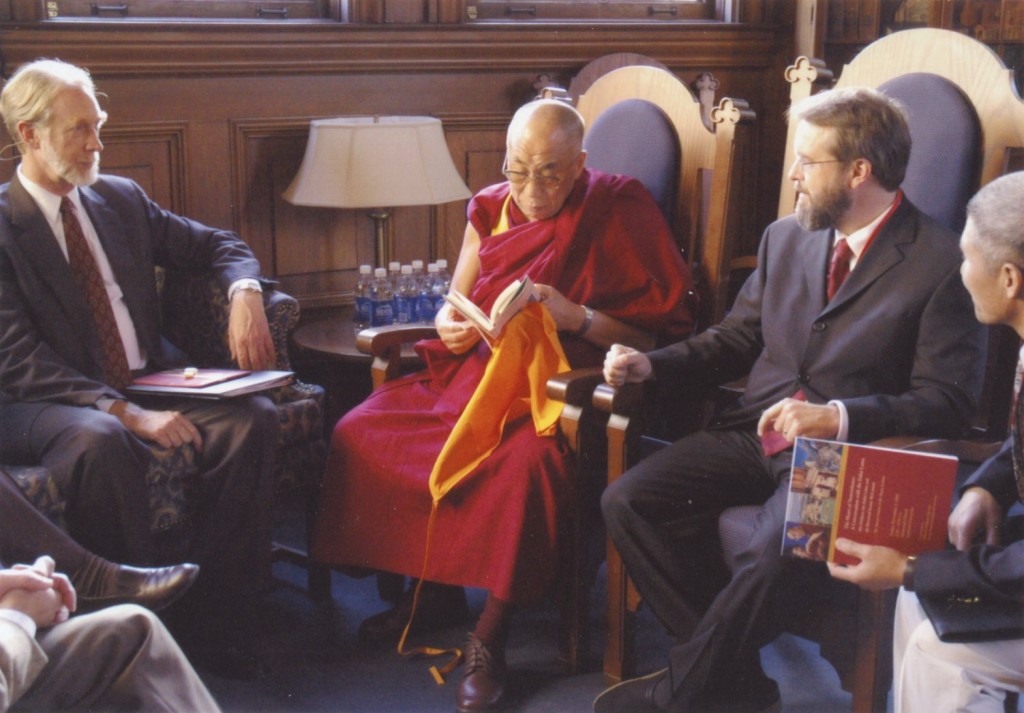
In his record of his travels in India, Gary writes:
The Dalai Lama doesn’t spend all his time at the ashram; in fact he had just returned from a tour of south India, Mysore, where a few Tibetan refugee settlements are. And the last thing I heard (since I got back to Japan) is that he’s going to set out and do some real Buddhist preaching over India, and maybe Europe and America eventually, spinning the wheel of the Dharma. He is at the least a very keen-minded well-read man, and probably lots more than that. Also, he himself is still in training—there are the “Senior Gurus of the Dalai Lama,” the most learned of Tibetans, who keep him on a hard study schedule and are constantly testing and debating with him (Passage Through India [San Francisco: Grey Fox Press, 1983], 84).*
* An expanded and photographically illustrated edition of Snyder’s account of his half-year in India was published by Shoemaker & Hoard in 2007. This report was first published in Caterpillar (19/3) in 1972.
July 4th, Mythic Patterns, and Proceeding by Clues
In “Proceeding by Clues,” his contribution to A Sense of the Whole, Robert Hass oberserves (p. 153):
On the next page [of Snyder’s “The Making of Mountains and Rivers Without End” (M&R 153–158)] he tells us, usefully, that he began the poem on April 8, 1956, and though he doesn’t claim to have finished it on April 8, 1996, he does describe giving a party on that date to celebrate the completion of the project. Like Louis Armstrong’s claiming to be born on the 4th of July, this suggests a desire to see life through mythic patterns, or to make them. It’s also an interesting take on Gary’s precision and discipline.
Today, on the 4th of July, I am reading Robin Cheng Tsing Tsai’s article on “The Ethics of Translation” (Ariel: A Review of International English Literature 40 [2009], 63–88) and she says the “initial conception” of Mountains and Rivers Without End occurred on April 4, 1956 “during a long talk with Hasegawa Saburo on Sesshu.” Both Tsai and Eric Smith (whom he cites) reference page 88 of Eliot Weinberger’s Paris Review interview with Snyder as the source of this information.
Wait! On April 4? So I go to Eric Todd Smith’s excellent Western Writers Series booklet, Reading Gary Snyder’s Mountains and Rivers Without End (Idaho: Boise State University Western, 2000), and see that on page 11 he does indeed say April 4, 1956.
Did Gary change the date from April 4 to April 8 as part of “a desire to see life through mythic patterns, or to make them”? And how did I not notice this before? Strange. So I go to my file cabinet and pull out my photocopy of the Paris Review interview. I find no reference to Hasegawa, nor do I find page 88. What’s going on? After a bit of confusion, I deduce I failed to copy the page immediately preceding the interview title page (“Gary Snyder: The Art of Poetry LXXIV”). What was on that page?
I then find the online version of the interview and see a link that says, “view a manuscript page.”* I click it and up pops what must have been on p. 88 from Gary Snyder’s journal, with a caption that reads, mistakenly, “A manuscript page from Gary Snyder’s Mountains and Rivers Without End.”
Ah! All’s well. There was just a misreading of the date: 8:IV:1956 is April 8, 1956: Shakyamuni Buddha’s rebirthday, celebrated as hanamatsuri in Japanese. This is celebrated in most of East Asia on the 8th day of the fourth month in the Chinese lunar calendar. However, Japan adopted the Gregorian calendar during the Meiji Restoration and so the designated (mythic) date is April 8 there and on Turtle Island.
• An audio file of Eliot Weinberger’s interview with Gary Snyder for the Winter 1996 Paris Review is available on YouTube.
Back Cover Quotation: Robert Hass
On the back cover of A Sense of the Whole you’ll find this quotation from Robert Hass, Poet Laureate of the United States from 1995–97:
That [Mountains and Rivers Without End] is a meditative exercise in looking is crucial to the long poem as a book of instruction and embodiment of knowledge, for its imagination of a transformation of American consciousness, and, implicitly, of our politics, and the ways we interact with the world.
This is from Hass’s brilliant discussion of how to read Snyder’s poetry, available in A Sense of the Whole:
Hass, Robert. “Proceeding by Clues: Reading Mountains and Rivers Without End.” In A Sense of the Whole. Ed. Mark Gonnerman, 143–202. Berkeley: Counterpoint Press, 2015.
On the Cover: Kazuaki Tanahashi | Bristle Cone Pine (1997)
The cover of A Sense of the Whole shows portions of Bristle Cone Pine, two matching 5′ x 12′ scroll paintings by Kazuaki Tanahashi commissioned by the Mountains & Rivers Workshop for Gary Snyder’s October 9, 1997, reading of Mountains and Rivers Without End in Kresge Auditorium at Stanford University. One scroll shows the bristlecone pine at night (back cover), the other in daylight.
With this, you get a sense of the scale:
Visit brushmind.net
And visit the Ancient Bristelcone Pine Forest in the White Mountains.
Welcome!
Welcome to futureprimitives.info: high quality information for Gary Snyder readers.
Here I will post on matters I presume are of interest to people interested in the life and work of Gary Snyder, a pioneering Pacific Rim poet and philosopher of the Wild.
I’m especially interested in topics and conversations that emerge from my new book, A Sense of the Whole (Counterpoint, 2015), a companion volume to Gary’s long poem cycle, Mountains and Rivers Without End (Counterpoint, 1996).
Please say hello and sign up for this blog via email using the form on the right.
–Mark | futureprimitives [dot] info [at] gmail [dot] com

